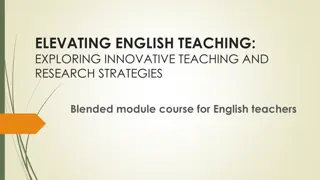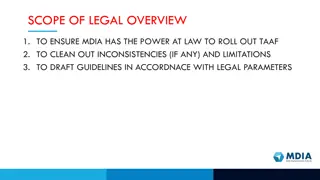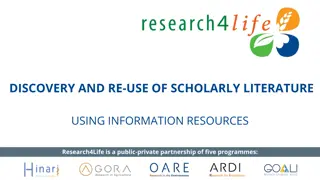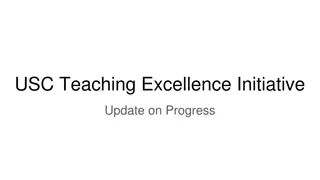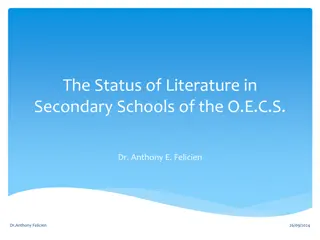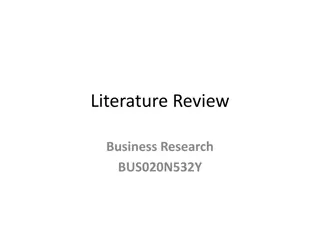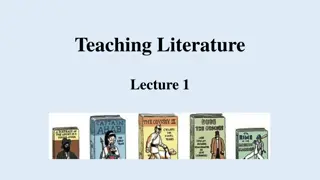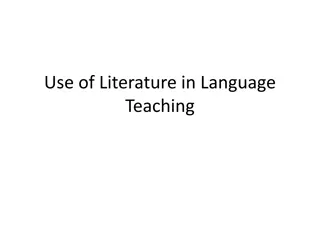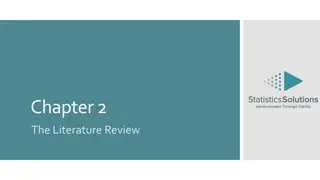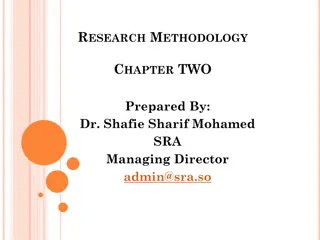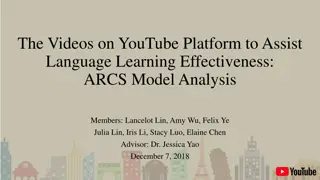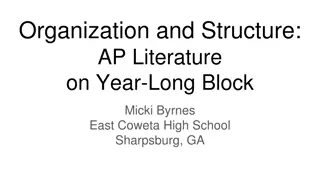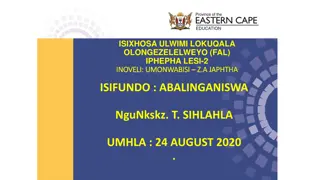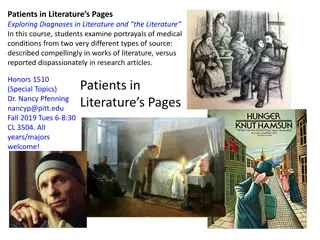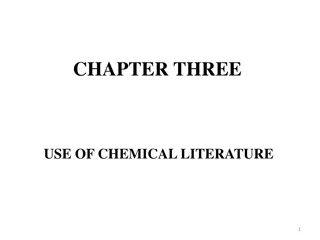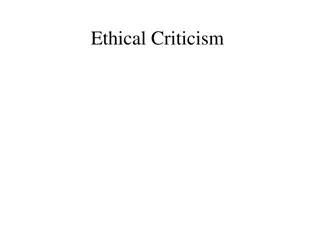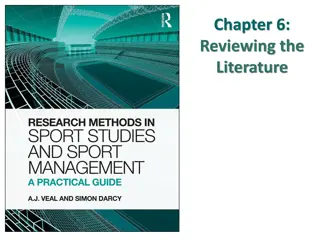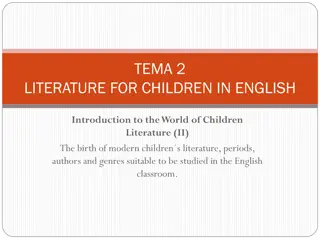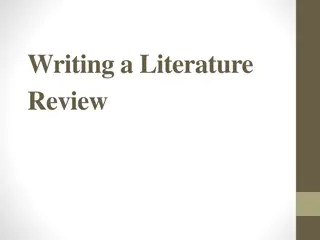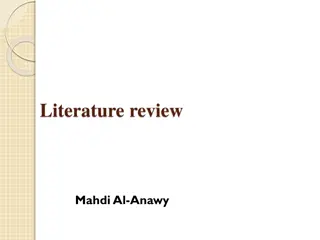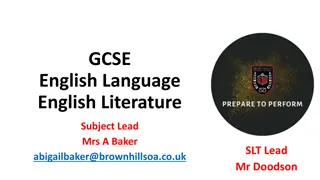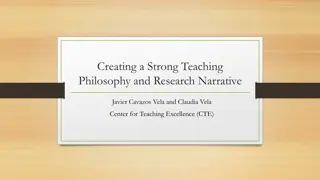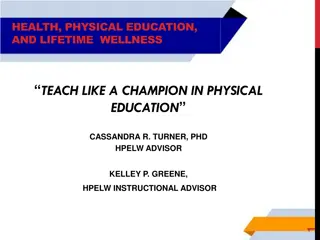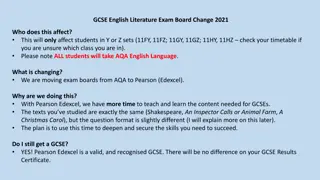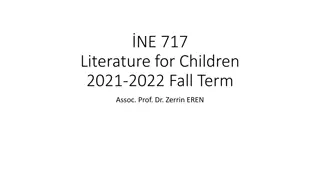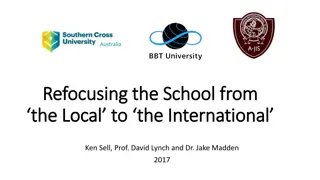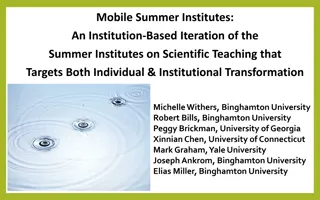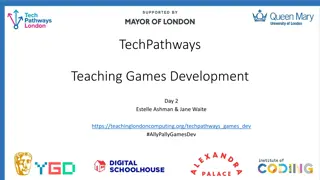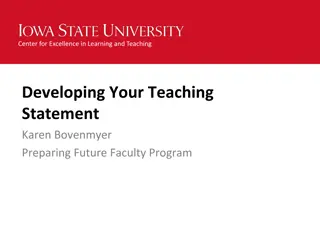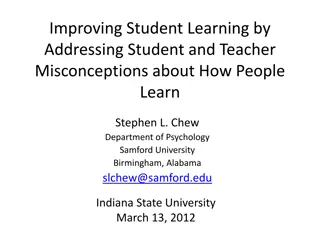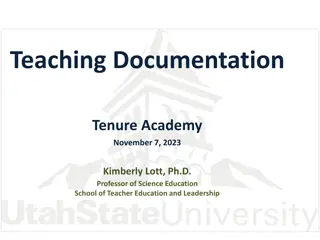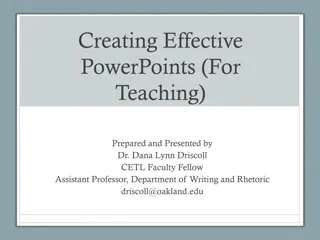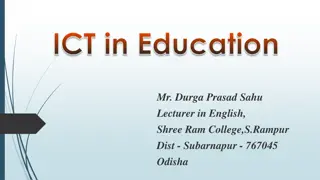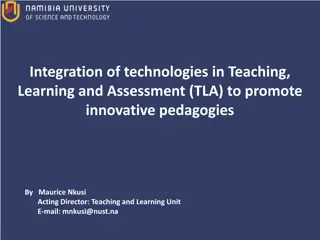Innovative Strategies for Teaching Literature with Technology
Explore the dynamic relationship between literature and technology in education through various engaging methods such as creating interactive environments, utilizing YouTube videos, mapping literature on Google Maps, and implementing WebQuests for a comprehensive reading experience.
Download Presentation

Please find below an Image/Link to download the presentation.
The content on the website is provided AS IS for your information and personal use only. It may not be sold, licensed, or shared on other websites without obtaining consent from the author. Download presentation by click this link. If you encounter any issues during the download, it is possible that the publisher has removed the file from their server.
E N D
Presentation Transcript
Ilukirjandus ja infotehnoloogia Kirsi Rannaste 2014
Teema valiku phjendus Millised on kirjanduse ja infotehnoloogia suhted? Milliseid v imalusi soovitavad oma ala spetsialistid kuidas kasutada infotehnoloogia vahendeid ra kirjanduse petamisel? Kuidas petatakse kirjandust ? -otsing Google is -tulemused???
BookTrailerforReaderHowto Makea BookTrailer ks paljudest v imalustest, kuidas tutvustada pilastele teost http://www.booktrailersforreaders.com/How+to+make+a+bo ok+trailer http://www.booktrailersforreaders.com/SSYRA+2013+2014+N omination+Award+Book+Trailers
The virtual classroom new technology for teaching African American literature includes related article on Western Governor s University Cover Story Artikkel virtuaalsest klassiruumist, kus petatakse kirjandust. Selleks et ppida paremini tundma teatud kindla perioodi kirjandust/autoreid, on v imalik luua interaktiivne keskkond, kus pilased n evad/kuulevad antud ajastut (muusika, t navam ra, helid jne) ning selline keskkond aitab paremini m ista ka selle perioodi kirjandust. http://diverseeducation.com/article/8340/
Ten Fun Ways to Use YouTube Videos in an Online Literature Class Artikkel sellest, kuidas kasutada kirjanduse tunnis YouTube'i videoid. N iteks v ib teha j rgmist: -kuulata, kuidas luuletajad loevad oma emakeeles oma luuletusi; -intervjuud kirjanikega; -vastava ajastu muusikapalade m ngimine/esitamine; -kirjandusteose p hjal tehtud filmi (v i filmikatkendite) vaatamine ja anal simine; -erinevate teose p hjal tehtud filmide (filmikatkendite) v rdlemine ja anal simine jne http://www.facultyfocus.com/articles/teaching-with-technology- articles/ten-fun-ways-to-use-youtube-videos-in-an-online-literature- class/
MappingLiterature Artikkel sellest, kuidas Google Map is koostada teose tegevuskohtadega kaart. http://www.ala.org/aasl/aaslpubsandjournals/knowledgeques t/kqwebarchives/v36/364/364cavanaugh
ReadingOnline Artikkel sellest, miks ja kuidas kasutada kirjanduse petamisel WebQuest i tehnikat. Literature-based WebQuests center the experience on reading by using books as the focal point for activities. Tasks might involve children in exploration of the theme, characters, plot, or setting of the book being studied. http://english.clas.asu.edu/wq-giver
ELT NEWS Literaturestrikesback! TeachingLiteraturewithTechnology Kaks kreeka teadlast r givad sellest, kuidas kasutada tehnoloogilisi vahendeid kirjanduse petamisel. stressed the necessity to use technology as a Trojan horse in order to initiate students into the magic world of literature and lexis. Digital Storytelling http://www.eltnews.gr/teaching_resources/801- %E2%80%9Cliterature-strikes-back-teaching-literature-with- technology%E2%80%9D
Literature, Science, and Technology See artikkel on teaduse, tehnoloogia, kirjanduse ja kunsti suhetest. One of the most obvious and interesting forms of convergence between students of literature and computer science has come in the area of computer-generated narratives: computer scientists working in artificial intelligence (AI) and folkorists, narratologists, and structuralist theoreticians of story telling all break down stories into component parts or structures and attempt to show how meaningful narratives can be generated from these parts. http://www.victorianweb.org/technology/litastech.html
Introduction: technology in teaching literature and culture: some reflections See artikkel on teaduse, tehnoloogia, kirjanduse ja kunsti suhetest. How does technology affect the relationships between subject matter and teaching methodology? the library parallel the seminar parallel etc As discussed above, something which is frequently overlooked is the interface between highlighting content and the appropriate use of technology which leads to successful implementations of digital learning resources. The projects which were demonstrated at the conference are not successful because they are technically complex, graphically stunning, or pedagogically different in their approach. They have succeeded, however, in focusing upon interesting and relevant content, and applying technology to it with methods which are appropriate to a learning aim. http://users.ox.ac.uk/~ctitext2/publish/occas/eurolit/porter.html
ICT as an Aid in Teaching English Literature and Bridging the Digital Divide Artikkel sellest, kuidas luule, proosa, draama ja kirjandusteooria petamisel kasutada infotehnoloogia vahendeid. Connectivity is a key-word when we talk about ICT. But there are a lot of questions which needs to be attended to while talking about ICT and connectivity. First is whether people are interested in using ICT tools. Next is whether the required infrastructure is available to them. Then, if it is available, are they competent enough to use them and derive benefit out of them. http://bcjms.bhattercollege.ac.in/ict-as-an-aid-in-the-teaching-of- english-literature-and-bridging-the-digital-divide/
TeachingLiteratureElectronically Artikkel sellest, kuidas kasutada IKT vahendeid kirjanduse petamisel -Interactive text-centered materials. -Collaborative Student-centered Activities. http://www.vcu.edu/engweb/webchap.htm




